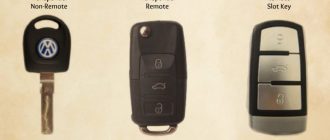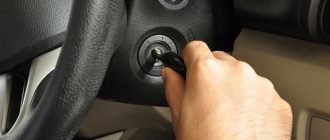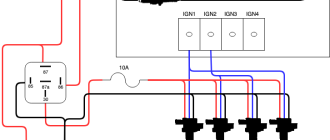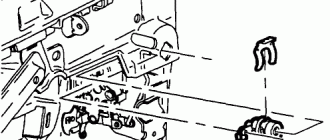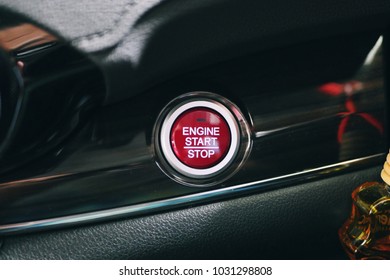
Car push start button: Pros And Cons
The car push start button has become a popular feature in modern vehicles. Gone are the days of inserting a key into the ignition and turning it to start the engine. Instead, drivers can simply press a button to start their car. While this technology brings convenience and innovation, it also has its drawbacks.
One of the main pros of having a car push start button is the ease of use. With a traditional key, there is always the risk of losing it or forgetting it inside the car. However, with a push start button, all you need is the key fob in your pocket or purse. This eliminates the need to search for keys and provides a seamless start to your vehicle.
Another advantage of the push start button is the added security. In older cars, thieves could easily hotwire the engine to steal the vehicle. However, with the push start button, the car’s computer system is programmed to recognize the key fob. Without the presence of the key fob, the engine cannot be started, making it more difficult for thieves to steal the car.
On the other hand, there are some cons to using a car push start button. Firstly, it relies heavily on battery power. If the battery in the key fob dies, the car may not start. This can be problematic if you are in a remote location with no access to a replacement battery. Additionally, if there is a malfunction in the car’s computer system, the push start button may fail to start the engine.
In conclusion, the car push start button offers convenience and added security to vehicle owners. However, it is not without its drawbacks. While it may be a more modern and innovative way to start a car, it also relies heavily on battery power and can be affected by malfunctioning computer systems. Drivers should weigh the pros and cons before deciding whether to opt for a car with a push start button.
What is a Car Push Start Button?
A car push start button is a feature in modern vehicles that allows the driver to start the car’s engine with the push of a button, rather than using a key. This button is typically located on the dashboard or center console of the car.
The push start button works by sending an electronic signal to the car’s ignition system, which then starts the engine. It is designed to provide a convenient and hassle-free way of starting the car, eliminating the need for a physical key.
Pros of a car push start button:
- Convenience: With a push start button, you don’t need to fumble for your keys or insert them into the ignition. It allows for quick and easy engine starts.
- Modern and sleek design: The push start button adds a modern and sophisticated touch to the car’s interior, giving it a more high-tech look.
- Keyless operation: You can leave your keys in your pocket or purse, as long as they are within the car’s range. This can be particularly useful if you have your hands full or if you often misplace your keys.
Cons of a car push start button:
- Dependency on electronics: The push start button relies on electronic components to function. If there is a problem with the car’s electrical system, you may not be able to start the engine using the button.
- Potential for battery drain: Leaving the push start button in the “on” position without starting the engine can drain the car’s battery. It’s important to remember to turn the button off when the engine is not running.
- Higher cost: Vehicles equipped with a push start button tend to be more expensive than those with traditional key ignition systems. Additionally, repairing or replacing the button can be costly.
Overall, a car push start button offers convenience and a modern design, but it is important to be aware of its potential drawbacks. It is essential to familiarize yourself with how the button operates and to take proper precautions to avoid any issues with starting the engine or draining the battery.
Advantages of Using a Car Push Start Button
Using a car push start button has several advantages over traditional key ignition systems:
- Convenience: With a push start button, there is no need to fumble around with keys to start the car. You simply press the button and the engine starts.
- Keyless Entry: Many cars with push start buttons also have keyless entry systems. This means you can unlock and lock your car without using a physical key.
- Enhanced Security: Push start buttons often incorporate advanced security features such as immobilizers and keyless entry systems, making it more difficult for thieves to steal your car.
- Modern and Stylish: Push start buttons give your car a modern and stylish look. They are often found in high-end luxury vehicles, giving your car a premium feel.
- Ignition Control: Push start buttons provide more control over the ignition process. They can be programmed to require specific actions, such as pressing the brake pedal, ensuring the car is in park, or even requiring a PIN code, adding an extra layer of security.
- Efficiency: Push start buttons can help save time and energy. You don’t have to waste time finding the key in your pocket or bag, and you don’t have to physically insert it into the ignition slot.
In conclusion, using a car push start button offers several advantages including convenience, keyless entry, enhanced security, modern and stylish appearance, ignition control, and improved efficiency.
Disadvantages of Using a Car Push Start Button
While the car push start button may have its pros and benefits, it also comes with its fair share of cons. Here are a few disadvantages to consider when using the push start button in a car:
1. Dependency on a functioning button: With traditional car ignition, a physical key is used, which ensures that the car can still be started even if the battery is drained or the car’s electrical system malfunctions. In contrast, a push start button is fully dependent on its proper functioning and the car’s electrical system. If the button fails or the car’s battery dies, the car may not start at all.
2. Higher chances of car theft: While push start buttons may provide convenience for car owners, they also increase the risk of car theft. Since these buttons do not require a physical key to start the car, thieves with advanced hacking skills can potentially steal a car by bypassing the button’s security features.
3. Difficulty in emergency situations: In urgent situations where immediate action is required, finding and pressing a push start button may take more time compared to inserting and turning a physical key. This delay could be crucial in contexts such as car accidents or when escaping from a dangerous situation.
4. Cost of repair and replacements: In case the push start button malfunctions or gets damaged, repairing or replacing it can be costly. The electronic components and technology involved in the button’s operation may require specialized knowledge and parts, which could lead to higher maintenance expenses compared to a traditional ignition system.
5. Reliance on the car’s battery: As mentioned earlier, the push start button is dependent on the car’s electrical system, specifically the battery. If the car’s battery runs out of power or becomes faulty, the push start button becomes useless, and the car won’t start unless the battery is replaced or recharged.
Considering these cons is essential before deciding whether to use a car push start button. While the convenience it offers may be appealing, it is also crucial to weigh the potential drawbacks and ensure that the button’s advantages align with your needs and preferences as a car owner.
Convenience of Car Push Start Button
One of the major pros of having a car push start button is the convenience it offers to the drivers. With just a simple push of a button, the car’s engine can be started without the need for inserting a key into the ignition. This eliminates the hassle of searching for keys and inserting them into the ignition. It also saves time as the driver does not have to fumble with keys.
Another advantage is that the push start button can be located at a convenient spot within the car, making it easily accessible for the driver. This means that the driver does not have to reach out to a certain location to start the car, making it more user-friendly and intuitive.
In addition, the push start button also allows for keyless entry and keyless ignition. This means that the driver can lock or unlock the car doors without having to physically use the key. It adds an extra layer of security and convenience.
However, there are some cons to consider as well. One of the main downsides is the reliance on electronic systems. If the car’s battery dies or if there is a malfunction in the electronic system, the push start button may not work. This can leave the driver stranded and require the assistance of a professional to fix the issue.
Overall, the convenience of a car push start button is undeniable. It offers quick and easy access to starting the car without the need for physical keys. However, it is important to consider the potential drawbacks and be prepared for any electronic system failures that may occur.
Security of Car Push Start Button
The introduction of the push start button in cars has brought convenience and technological advancements to the automotive industry. However, with every new feature, there are pros and cons to consider. When it comes to the security of a car push start button, there are some potential drawbacks to be aware of.
- Vulnerability to relay attacks: One of the major concerns with car push start buttons is their vulnerability to relay attacks. Hackers can use amplification devices to capture and relay the signal between the car’s key fob and the engine start button. This enables them to start the car without the need for the actual key fob, making it easier for thieves to steal the vehicle.
- Key fob cloning: Another security risk associated with car push start buttons is key fob cloning. If a thief gains access to the key fob, they can clone its code and use it to start the car. This allows them to bypass any security measures in place and drive away with the vehicle.
- Unauthorized access: Car push start buttons can also be susceptible to unauthorized access. If someone manages to gain physical access to the vehicle’s interior, they may be able to start the car without the need for the key fob. This can be a concern in situations where the car is parked in an insecure location.
- No physical key: Unlike traditional key ignition systems, car push start buttons eliminate the need for a physical key. While this can be convenient, it also means that there is no physical barrier preventing unauthorized individuals from starting the car. If the key fob is lost or stolen, it could potentially fall into the wrong hands and be used to start the vehicle.
- Risk of battery failure: In the event of a dead or low battery in the key fob, the push start button may not work. This can be a problem if the driver is stranded or in an emergency situation. Having a backup physical key or alternative means of starting the car can provide a sense of security in such instances.
While car push start buttons offer convenience and functionality, it is important to consider the security implications that come along with this feature. It is crucial for car owners to take appropriate measures to protect their vehicles and minimize the risks associated with push start buttons.
Reliability of Car Push Start Button
The push start button in cars has gained popularity in recent years as a convenient alternative to the traditional key start. Despite its pros and the convenience it offers, there are some concerns surrounding the reliability of the car push start button.
One of the main issues with the push start button is the dependency on the car’s electrical system. If there is a problem with the car’s battery or electrical components, it can prevent the push start button from functioning properly. This can be particularly troublesome in situations where the driver needs to quickly start the car and go.
Another concern is the vulnerability of the push start button to technical malfunctions or defects. Unlike a physical key, which is more straightforward and less likely to encounter technical issues, the push start button relies on complex electrical systems that can be prone to failure. In the event of such a failure, the driver may be unable to start the car, resulting in inconvenience and potential delays.
Additionally, the push start button can be susceptible to hacking or unauthorized access. As it works based on wireless signals, there is a risk of someone gaining unauthorized access to the car’s systems and being able to start the car without the owner’s knowledge or consent. This can lead to theft or other security concerns.
Despite these concerns, many car manufacturers have taken steps to address the reliability issues associated with push start buttons. For example, they may implement fail-safe mechanisms that allow the car to be started even if there is an issue with the push start button or the car’s electrical system. Additionally, advancements in technology are continuously being made to enhance the security and reliability of push start buttons.
- In summary, while the push start button offers convenience to car owners, it is important to consider the reliability aspects mentioned above.
Cost of Car Push Start Button
One of the major considerations when it comes to the car push start button is the cost. While there are several pros and cons to having this feature in your car, the price is an important factor to consider.
The cost of installing a car push start button can vary depending on the make and model of your car. In general, it is more expensive to install this feature in older car models compared to newer ones. Additionally, the cost can also vary based on the brand and quality of the push start button system.
On average, the cost of installing a car push start button can range from $100 to $500. This includes the price of the push start button itself, as well as the installation charges. In some cases, you may also need to purchase additional components or accessories to complete the installation, which can increase the overall cost.
It is also important to consider the long-term cost implications of having a car push start button. While the initial installation cost may seem high, it can provide added convenience and comfort in your daily driving experience. Moreover, having this feature can potentially increase the resale value of your car.
However, it is worth noting that having a car push start button might also come with added maintenance and repair costs. Since this feature uses electronic components and requires an intricate wiring system, any malfunction or damage to the push start button system could be expensive to repair.
In conclusion, the cost of installing a car push start button should be carefully evaluated, taking into account both the initial installation cost and potential long-term expenses. Making an informed decision based on your budget and needs will help you determine whether the car push start button is a worthwhile investment for you.
Installation of Car Push Start Button
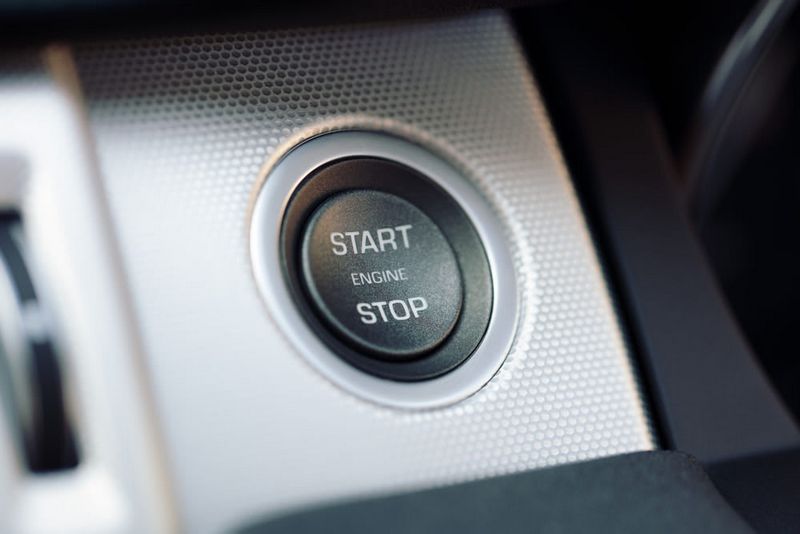
Installing a car push start button comes with its pros and cons. On the positive side, a push start button offers convenience and ease of use. Instead of using a traditional key to start the car, drivers can simply push a button to start the engine. This can make the start-up process faster and more efficient.
The installation process of a car push start button involves several steps. First, the existing ignition system needs to be removed. This may involve disconnecting wires and removing the key cylinder. Next, the push start button is wired into the car’s electrical system. This requires connecting the appropriate wires and ensuring proper grounding. It is important to follow the manufacturer’s instructions carefully to ensure a successful installation.
One disadvantage of installing a push start button is the potential for increased vulnerability to theft. Since there is no physical key required, it may be easier for someone to gain unauthorized access to the car and start the engine. However, many push start systems incorporate advanced security features to prevent theft, such as encryption and immobilizer systems.
Overall, the installation of a car push start button can be a convenient and modern upgrade for a vehicle. However, it is important to weigh the pros and cons and consider the specific needs and security concerns before making a decision.
Maintenance of Car Push Start Button
Car push start button is a convenient feature that has its pros and cons. While it offers ease of use and eliminates the need for a physical key, it also comes with its own set of maintenance requirements.
One of the main advantages of a push start button is that it is less prone to wear and tear compared to a traditional key ignition system. The button itself is designed to be durable and withstand constant use. However, it is still important to keep the button clean and free from dust and dirt, as these can affect its functionality.
Regular cleaning of the push start button can be done using a soft cloth and mild detergent. Be careful not to use abrasive cleaners that can damage the button’s surface. It is also important to avoid using excessive force when pressing the button, as this can cause it to malfunction.
Another aspect of maintenance for the push start button is its battery. The button requires a small amount of power to operate, and this power is provided by a small built-in battery. It is recommended to check the battery periodically and replace it when needed. Most push start buttons have a warning light that indicates a low battery, so be sure to pay attention to any warnings or alerts.
In addition to regular cleaning and battery replacement, it is also important to have the push start button system inspected and maintained by a qualified technician. They can check for any underlying issues or potential problems with the system, such as wiring or connection problems. Regular maintenance can help prevent any major malfunctions and ensure the longevity of the push start button system.
In summary, the maintenance of a car push start button involves regular cleaning of the button, checking and replacing the battery, and regular inspections by a qualified technician. By taking care of these maintenance tasks, the push start button can continue to provide the convenience and ease of use that it is known for.
Compatibility of Car Push Start Button
The car push start button is a convenient and modern feature that has become increasingly popular in recent years. However, it is important to consider the compatibility of this button with your car before making a purchase or installation.
One of the main cons of the car push start button is that it may not be compatible with all car models. While many newer car models come equipped with this feature, older models may not have the necessary technology to support it. It is important to check with your car manufacturer or consult a professional to determine if your car is compatible.
Another factor to consider is the type of car you have. Some high-end and luxury car brands may have their own unique push start button systems that may not be compatible with aftermarket products. It is important to do thorough research and ensure that the push start button you choose is compatible with your specific car make and model.
Additionally, it is important to consider the installation process. Installing a car push start button may require modifications to your car’s electrical system, which can be complex and may void your warranty. It is recommended to have the installation done by a professional to ensure compatibility and avoid any potential issues.
In conclusion, while the car push start button offers convenience and modernity, it is important to consider the compatibility of this feature with your car. Checking with your car manufacturer, researching compatibility with your specific car make and model, and consulting a professional for installation are all important steps to ensure a successful integration of the push start button.
Functionality of Car Push Start Button
The car push start button is a modern innovation that offers convenience and ease of use to car owners. It allows drivers to start their car with the simple push of a button, eliminating the need for a traditional key ignition.
One of the key advantages of the car push start button is its simplicity. With just a press of a button, the car engine starts up, allowing the driver to quickly and easily get on their way. This eliminates the need to fumble with a key or worry about a bulky keychain.
In addition to its ease of use, the car push start button also offers enhanced security. Many push start systems utilize smart key technology, which means the car will only start if it detects the presence of the correct key fob. This adds an extra layer of protection against theft and unauthorized use.
Another benefit of the push start button is its ability to provide keyless entry. Some systems allow drivers to unlock and lock their car doors with the push of a button, without having to use a physical key. This can be particularly useful in situations where your hands are full or if you are in a hurry.
However, like any technology, the car push start button also has its cons. One potential drawback is the reliance on battery power. If the battery in the key fob dies, the driver may not be able to start their car until the battery is replaced. Additionally, if the push start system malfunctions, it can be expensive to repair or replace.
In conclusion, the car push start button offers numerous pros, including convenience, enhanced security, and keyless entry. However, it is important to be aware of its limitations and potential drawbacks. Overall, it is up to each individual to decide if the benefits outweigh the cons for their specific needs and preferences.
Style of Car Push Start Button
The style of the car push start button is an important factor to consider when deciding whether to have one in your car. The design and layout of the button can enhance the overall look and feel of your car’s interior, adding a touch of modernity and sophistication.
One of the pros of the push start button is the sleek and minimalistic design it offers. Unlike traditional keys, which can be bulky and easily lost, the push start button is compact and seamlessly integrates into the dashboard. It gives a streamlined look to the car’s interior, making it appear more sophisticated.
Additionally, the push start button allows for a keyless start experience. This means that you can start your car with just the push of a button, without the need for inserting a key into the ignition. This not only adds convenience but also eliminates the risk of damaging the key or ignition over time.
However, it is important to consider the cons of the push start button as well. One of the main cons is the potential for accidental starts. Since the push start button only requires a simple push to start the car, it can be accidentally pressed while inside a bag or pocket, resulting in the car starting unintentionally. This can be a safety concern and may lead to potential accidents.
Another con is the reliance on technology. Push start buttons require a working key fob to operate. If the key fob’s battery dies or if there is a malfunction in the system, you may not be able to start your car. This can be a major inconvenience, especially if you are in a hurry or in an emergency situation.
In conclusion, the style of the car push start button adds a modern and sophisticated touch to the car’s interior. However, it is important to carefully consider the pros and cons before deciding to opt for this feature. The sleek design and keyless start convenience should be balanced against the potential for accidental starts and reliance on technology.
Safety of Car Push Start Button
The car push start button has become increasingly popular in recent years. While it offers convenience and modernity, there are important considerations regarding safety that car owners should be aware of.
Pros:
One of the main advantages of the push start button is that it eliminates the need for a physical key. This means there is no risk of losing or misplacing the key, and unauthorized access to the car becomes more difficult. The button also simplifies the process of starting the car, as drivers only need to push the button to start or stop the engine, saving time and effort.
Cons:
One concern regarding the push start button is the possibility of accidental starting of the car. Unlike traditional keys, push buttons can be easily pressed unintentionally. This can be especially dangerous if the car is parked in a confined space or if there are children around. Additionally, there have been cases of car owners accidentally leaving their cars running because they mistakenly believed that the engine had been turned off by pressing the button.
Furthermore, in the event of a dead car battery or electrical failure, starting the car may become problematic. With a traditional key, car owners can still start the car manually even if the battery is dead, but this is not possible with a push start button.
In conclusion, while the car push start button offers convenience and modernity, it is important to be aware of the potential safety risks. Car owners should be cautious in preventing accidental starts and ensure they understand the workings of the button in case of emergencies.
Q&A:
What are the benefits of a car push start button?
One of the benefits of a car push start button is the convenience it provides. You no longer need to fumble around for your keys as you can simply press a button to start your car. It also adds a level of security as the car can only be started if the key fob is present. Additionally, push start buttons usually come with keyless entry, allowing you to easily lock and unlock your car without using the key.
Are there any disadvantages to using a car push start button?
Yes, there are some disadvantages to using a car push start button. One of the main concerns is the possibility of the key fob running out of battery. If your key fob loses battery power, you will not be able to start your car. Another downside is that push start buttons can be expensive to replace if they malfunction. Additionally, some drivers may find it less intuitive to use a push start button compared to a traditional key.
Do all cars come with a push start button?
No, not all cars come with a push start button. Push start buttons are more commonly found in newer and higher-end cars, but they can also be installed as an aftermarket feature. It’s important to check the specifications of a car or consult with the dealer to see if a push start button is included.
Can a car push start button be easily hacked?
While it is theoretically possible to hack a car push start button system, it is quite difficult to do so. Push start buttons use advanced encryption technology to prevent unauthorized access. However, it is always important to be cautious and take necessary precautions to protect your car from potential hacking attempts.
Is it possible to start a car with a push start button if the key fob is not inside the vehicle?
No, it is not possible to start a car with a push start button if the key fob is not inside the vehicle. The key fob sends a signal to the car’s computer system, allowing it to start. If the key fob is not within range, usually within a few feet of the car, the push start button will not work.

